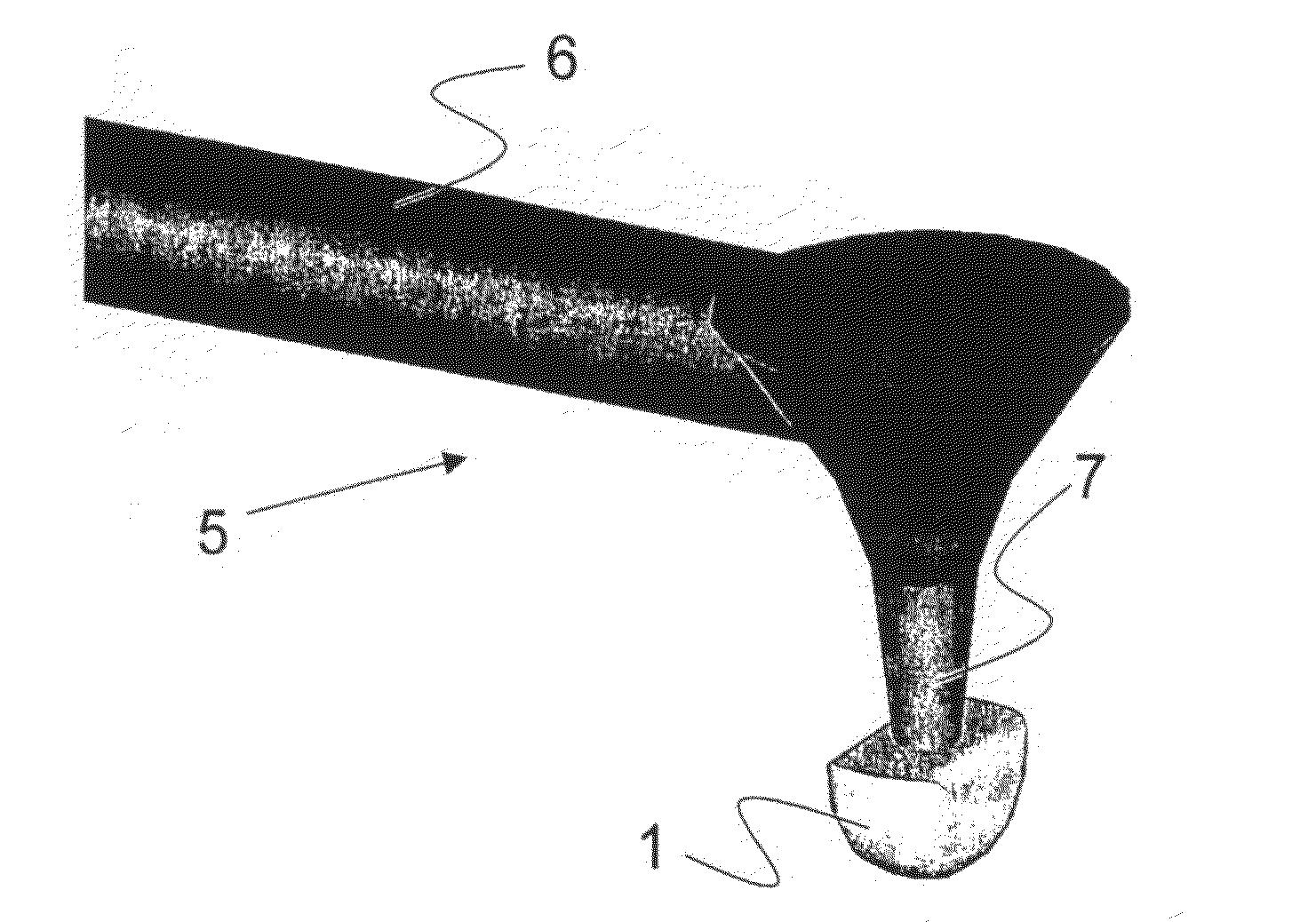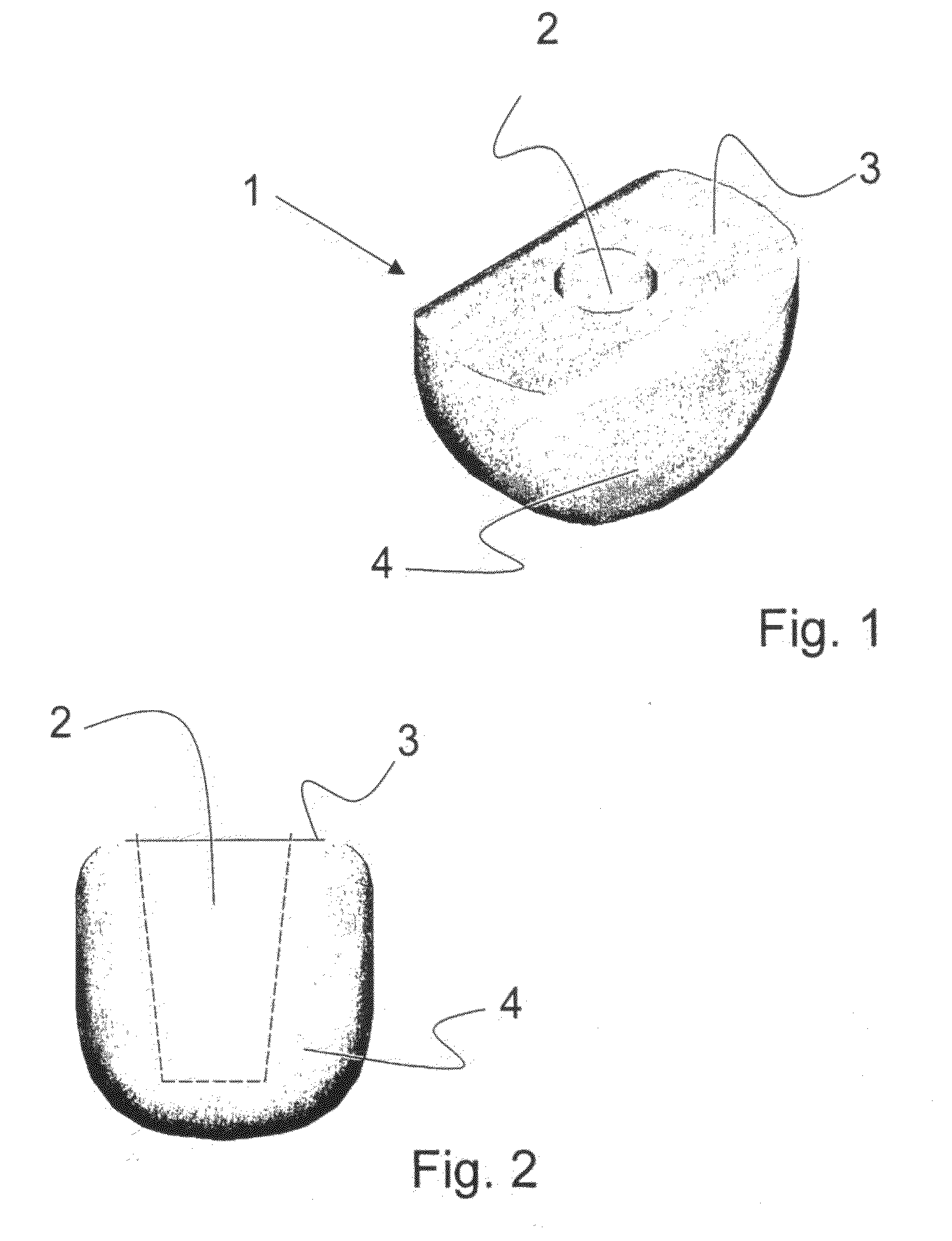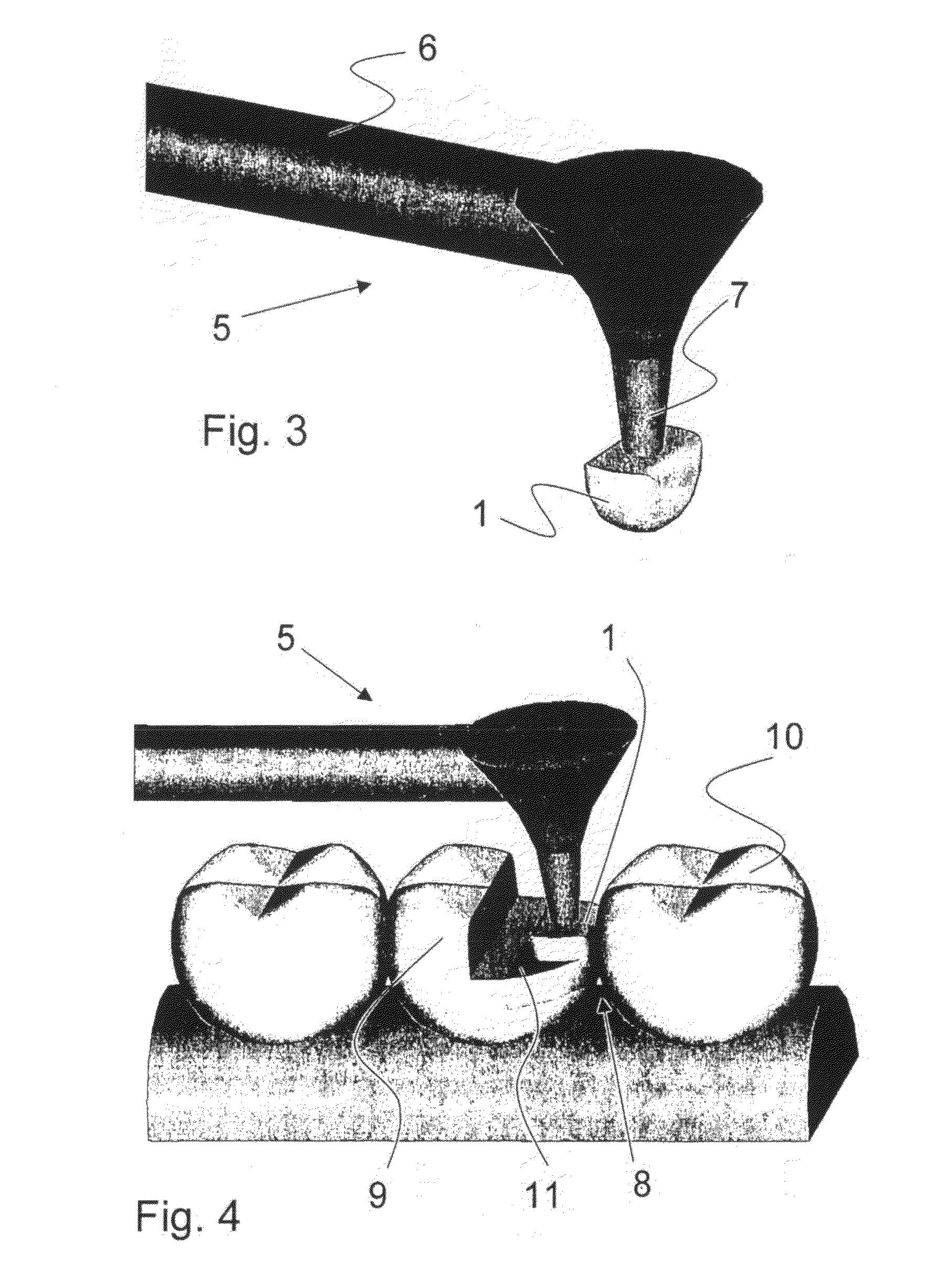Insertion, Devices, Methods and System for Use in Dentistry
a technology for dental implants and dental implants, applied in dentistry, medical science, light therapy, etc., can solve the problems of increasing the risk of caries and paradontal disease, the use of amalgam has declined rapidly, and patients are uncomfortable, etc., to achieve convenient scaling up or down, improve the effect of quality and safety, and facilitate the effect of automation
- Summary
- Abstract
- Description
- Claims
- Application Information
AI Technical Summary
Benefits of technology
Problems solved by technology
Method used
Image
Examples
Embodiment Construction
[0096]A dental insertion 1 according to the invention is shown schematically in FIG. 1. The dental insertion 1 comprises a cavity 2, a surface 3 and a body 4. According to the inventive idea the cavity 2 extends from the surface 3 to at least the centre of the body 4, which is shown in FIG. 2, wherein the dashed line represent the extension of the cavity 2.
[0097]The dental insertion 1 may have various shapes and dimensions, although dimensions of 1-10 mm in both height, breadth and depth are usually preferable in clinical practice.
[0098]According to the invention the cavity 2 may have several different geometrically shapes. It may for instance in cross section be essentially circular, elliptical or polygonal, such as square or hexagonal. As mentioned above, these shapes are all well suited for complementary interaction with a tip 7 of a device 5. However, a cavity 2 with a circular cross section has the additional advantage of allowing the dentist to fasten the insertion 1 to a tip ...
PUM
 Login to View More
Login to View More Abstract
Description
Claims
Application Information
 Login to View More
Login to View More - R&D
- Intellectual Property
- Life Sciences
- Materials
- Tech Scout
- Unparalleled Data Quality
- Higher Quality Content
- 60% Fewer Hallucinations
Browse by: Latest US Patents, China's latest patents, Technical Efficacy Thesaurus, Application Domain, Technology Topic, Popular Technical Reports.
© 2025 PatSnap. All rights reserved.Legal|Privacy policy|Modern Slavery Act Transparency Statement|Sitemap|About US| Contact US: help@patsnap.com



